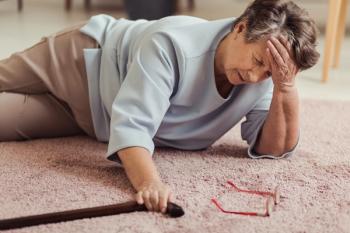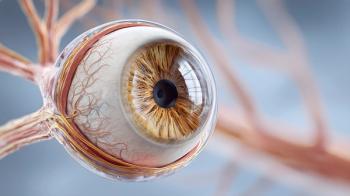
Yes, Mask Wearing Can Affect the Eyes
The surface of the eye is exposed to airflow from inhaling and exhaling air. A snug fit can reduce if not eliminate the problem.
Thanks to the COVID-19 pandemic many people now know what it means to wear a mask for hours at a time. They’ve learned to cope with dermatitis, headache and other consequences of a mask that covers your nose and mouth.
An increase in patients with dry eye symptomsled to the concept of a new condition: mask-associated dry eye, or MADE.
For healthcare professionals — especially those working in pandemic clinics — eight hours of mask wearing is routine, so they were the “standardized and ideal” group for a
In the observational study, they compared 64 healthcare professionals who wear masks for six to 12 hours and work in COVID-19 pandemic clinics with a control group of 66 short-term (one to two hours) mask users. Cases of conjunctivitis, keratitis, and episcleritis have been
All participants filled out the Ocular Surface Disease Index (OSDI) questionnaire and underwent a battery of tests: tear film break-up time (T-BUT), Oxford staining score, Schirmer’s test I and meibography (imaging of
As in other studies, longer mask-wearing times carried a greater risk of ocular surface damage. No statistically significant difference was observed in the OSDI scores; the Schirmer I test (a test for tear production) was also statistically similar.
However, the two groups had statistically significant differences in T-BUT (a finding of tear film instability) and the Oxford staining score (showing cornea epithelial damage) was statistically higher in the long-term group. Finally, the incidence of lid parallel-conjunctival fold, a result of increased friction of the conjunctiva due to dry eye disease, was also statistically significantly higher in the long-term group.
An ill-fitting mask exposes the eye surface continuously to inhaled and exhaled air. Microorganisms in the air droplets can contaminate the ocular surface. However, a somewhat surprising finding from one
To their knowledge, the researchers say, there is no previous study evaluating the effect of required mask wearing on the ocular surface in COVID‑19 clinics. They do note a limitation of their study: that the participants had all been working in environments with systematic air conditioning, artificial lighting, positive pressure, and masks for many years before the COVID‑19 pandemic.
To counteract the risk of eye damage, the researchers recommend wearing the face mask properly, of course, or fixing it over the nose by sticking surgical tape on the top to prevent airflow to the ocular surface and wearing the mask with rest intervals. They also say “more frequent ophthalmology follow‑ups and earlier use of eye lubricants should be on the agenda.”
The study was published in the Nigerian Journal of Clinical Practice.
Newsletter
Get the latest industry news, event updates, and more from Managed healthcare Executive.






















































